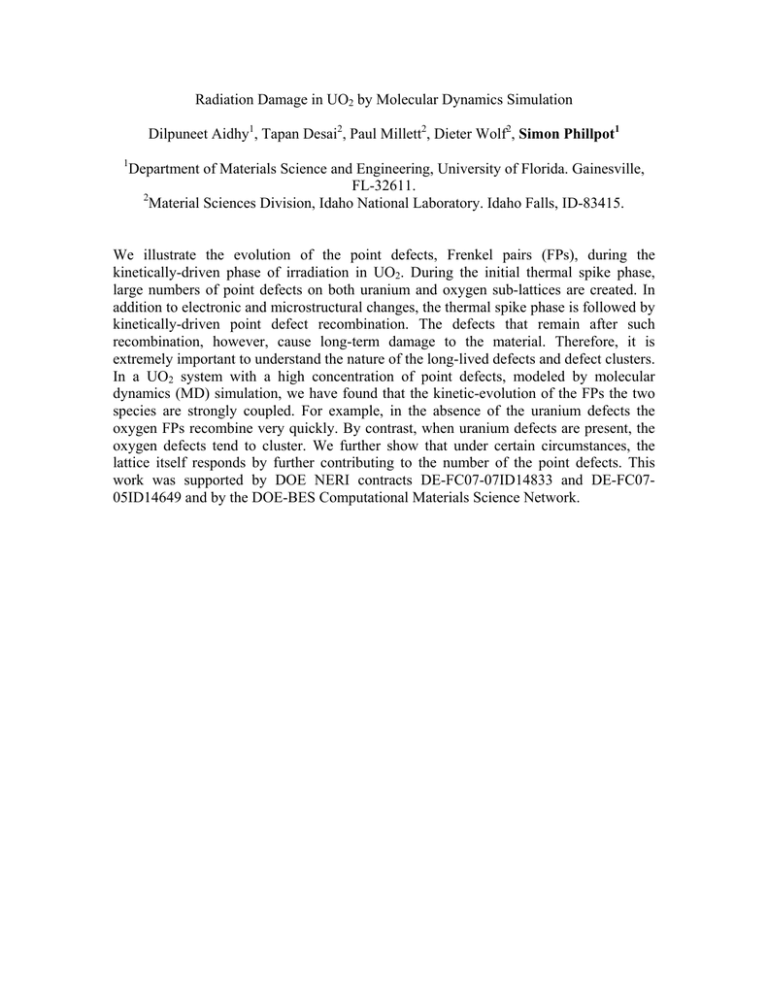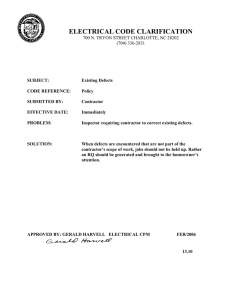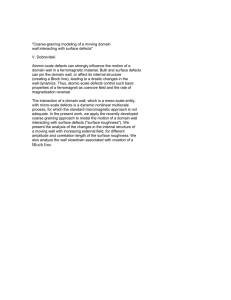Radiation Damage in UO by Molecular Dynamics Simulation Dilpuneet Aidhy
advertisement

Radiation Damage in UO2 by Molecular Dynamics Simulation Dilpuneet Aidhy1, Tapan Desai2, Paul Millett2, Dieter Wolf2, Simon Phillpot1 1 Department of Materials Science and Engineering, University of Florida. Gainesville, FL-32611. 2 Material Sciences Division, Idaho National Laboratory. Idaho Falls, ID-83415. We illustrate the evolution of the point defects, Frenkel pairs (FPs), during the kinetically-driven phase of irradiation in UO2. During the initial thermal spike phase, large numbers of point defects on both uranium and oxygen sub-lattices are created. In addition to electronic and microstructural changes, the thermal spike phase is followed by kinetically-driven point defect recombination. The defects that remain after such recombination, however, cause long-term damage to the material. Therefore, it is extremely important to understand the nature of the long-lived defects and defect clusters. In a UO2 system with a high concentration of point defects, modeled by molecular dynamics (MD) simulation, we have found that the kinetic-evolution of the FPs the two species are strongly coupled. For example, in the absence of the uranium defects the oxygen FPs recombine very quickly. By contrast, when uranium defects are present, the oxygen defects tend to cluster. We further show that under certain circumstances, the lattice itself responds by further contributing to the number of the point defects. This work was supported by DOE NERI contracts DE-FC07-07ID14833 and DE-FC0705ID14649 and by the DOE-BES Computational Materials Science Network.






